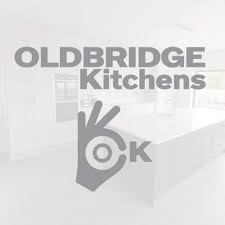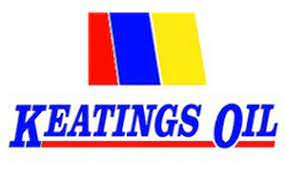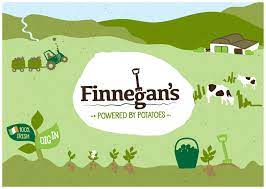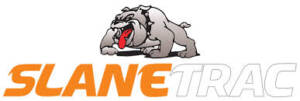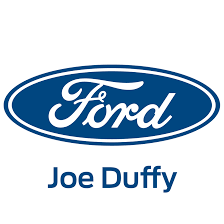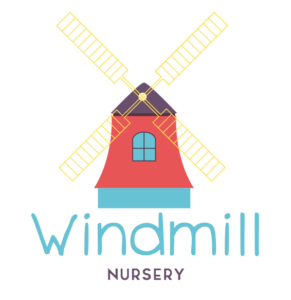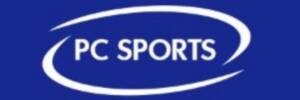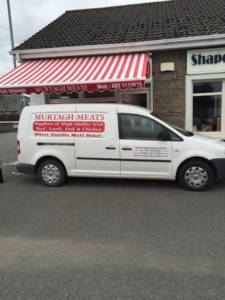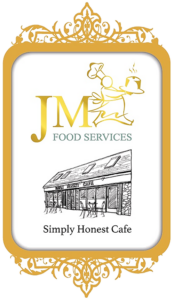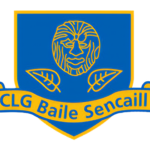The Early Days
In this effort to write a history of our parish G.A.A. Club. I wish to state that it is a pity someone more competant than myself did not find time to do so. I ask the reader to accept the effort as a tribute to great parishioners that down through the last half century have proudly carried on the great work and the Seneschalstown Club must thank the clergy, teachers, supporters and the great players who have given their time andenergy through the years to our national pastimes.
For over a century the Yellow Furze-Kentstown parish has been a stronghold of the G.A.A. We must always remember why great Irishmen founded this organisation – “To promote Irish games, the speaking of our own language and the promotion of native muse and dances.”
Back in those early days a member was looked on with suspicion by many but today we are recognised as one of the greatest amateur sports’ bodies in the world. he following lines from our “Treorai Ofigiuil” (Official Guide), should be studied by our youth of today. When the G.A.A. was founded, in the last quarter of the 19th century, pride of race had been crushed out of most of our people by famine and armed oppression. The G.A.A. and the Gaelic League helped to resurrect that pride and as these organisations grew in strength, a new spirit which was to influence and affect the subsequent history of Ireland was born. Today the native games take on a new significance when it is realized that they have been, and still are, a part of the nation’s desire to live her own life and to govern her own affairs.”
Since she has not control over all the national territory, Ireland’s claim to nationhood is impaired. It would be still more impaired if she were to lose her own language, if she failed to provide a decent livelihood for her people at home or if she were to forsake her own games and customs in favour of the games and customs of another nation If pride in the attributes of nationhood dies, something good and distinctive in our own race dies with it. Each national quality that is lost makes us so much poorer as a nation.
The national side of the G.A.A. and its dedication to the ideal of an Irish Ireland must be kept to the forefront at all times. To the youth of Ireland, a knowledge of the circumstances in which the G.A.A. was founded, of the part it played in the years before the rising of 1916, of the share its numbers had in the fight for freedom, is merely knowledge of their own inheritance and should not be withheld from them. Such knowledge would mark out the native games as more than mere-games and would show that the association which promotes them has had and still has a strong influence for national good.
The G.A.A. is a 32 county today, a body that never accepted a border between 26 of our counties and 6 Ulster counties, the seas around us are the border. We pray for violence to cease and look for ward to the Orange and Green to unite and work and live in peace, but until justice is given to our minority then and only then can we have peace. A final work for the future, it is as important today as in 1884 to carry on the good work, we are now in Europe and we must preserve our Irish identity as it is by our games, music and language that our nation will be kept alive or else we will become consumers of entertainment manufactured for a European Market.
GAELIC FOOTBALL YELLOW FURZE-KENTSTOWN PARISH 1932 – 1982
SENESCHALSTOWN G.F C.
This being the Golden Jubilee year of our parish G.A.A. club, “SENESCHALSTOWN”. I feel it is only fitting that the past years be brought to mind. Those of us who have lived through this half century can re-live the past, while the young will be glad to hear of “the great men of the past.”
My first memories of football are when a team was formed in Ashfield and goal posts were erected on the lawn on the left hand side of avenue as you go towards the house. Capt. Newsome kindly gave the use of the field. He was only resident there a short time having got the house and some land from the Land Commission when the Murray estate was divided in 1927. This venue did not last long and the season was finished in a field at Seneschalstown on the Kentstown Road or the Mill Road as it was known at the time. I do not remember many of the players or officials but Larry O’Hare and Ned Crinion, both from Skerrymount, Johnny Johnson from Rosnaree, now living on the Slane Road (below McGruders Cross) and Tom Mitchell who worked at that time with the Weldon family at Seneschalstown were all active. Many should remember Tom Mitchell, he moved to Navan and was a Pairc Tailteann steward for many years. He always was a Furze parish supporter and was a spectator in a wheelchair when Seneschalstown won the Keegan Cup in 1972.
Soon the club again found another home, this time in Knockerk, in a field owned by the late Owen Byrne, a great supporter of Gaelic game and athletics. It seemed at last the parish was going to have a team worthy to compare with teams of the past such as the Yellow Furze Fr. Grennans or as they were known at the time “The Shirties”.
Knockerk took part in the Meath Junior Championships for a few years and had many promising players. I remember Pat Carter playing, Dan Tully known as “little Dan”, and there was also “Big” Dan Tully, a fine fair haired six footer, while Jimmy Raleigh was also a grand player at that time. The club had also a strong athletic club, and for a few years great “sports” meetings were held there. There was always fine competition, all the leading athletes competed in the various races, high jump, pole vault, weight throwing, cycling, etc. Large crowds attended and many buses came from Dublin and many parts. The local club travelled to many meetings and had members to compete in nearly all the events.
Knockerk went out of existence. The parish was once more without a gaelic football team and cricket reigned supreme and indeed was played down through the years even when there was football in Ashfield. Cricket was played in Yellow Furze and Kentstown schools. There was always bats, wickets, etc., and each day at lunch time the Furze boys played in the chapel field where now stands the Parochial House and New Cemetery. One does not wish to comment on cricket but to admitted it was born in the demenses, manors and estates and the tenants and staff were all “roped in”. Of course peasants at that time had little choice. Soon the game was played in townlands and men and boys all turned out. Here in this part we had teams in Beauparc, Hayes, Sommerville, and Rathdrina, while cricket was also played at the Cotton Mills and the flat on Fagan’s Hills.
Fr. Marry C.C. here in Yellow Furze was keenly interested in gaelic football, a native of Slane parish who won a Meath Junior Championship with his native parish. He presented a football to the school and soon the boys of the parish were just wild for the game. Kentstown at this time nearly always had a football as on the words of Fr. Packie Tully to Donncha O Dulaing “Lord Athlumney kindly gave one each year to the school”. Fr. Marry arranged matches between the two schools and any person watching those matches little thought many of the boys would figure on a parish team that was to bring the first G.A.A. Championship to Kentstown-Yellow Furze in 1936. Soon the pick of both schools were to form a parish team and played several matches. I cannot remember if there was a juvenile competition at the time. The young curate had bigger things in mind and soon he talked of a junior team, he could not imagine how young men could play pitch & toss for hours each Sunday, and he let it be known that he would do all he could to discourage this local gamble.
So fifty years ago in the Spring of 1932 he announced that he had a football, a set of jersies (blue and gold), and a field to play in from the late Christopher Farrell, Seneschalstown House. He appealed at Masses on this particular Sunday for the youth of the parish to be there in the afternoon and play football and not pitch & toss. He arrived up from the Parochial House to find a large gathering, young and old, all were anxious for a parish team. He addressed the gathering, a committee was appointed and so the Seneschalstown Club was born. The Chairman appointed was Jack Watters, Beauparc: Pat Carter, Secretary; while Jimmy Raleigh was also offical. John Reilly, Beauparc, (later to reside at Stackallen,) and Jack Duffy, Hayes, passed to their eternal reward, were also founder members.
Going back to that time we must agree Gaelic football was really gaining ground, wonderful matches and increased attendances. Meath at that time were equal to the best and should have won a Leinster Championship between 1927 and 1934. Kerry and Kildare were giving wonderful displays; Kildare winning the All-Irelands of 1927 and 1928 while Meath held them to drawn matches in Leinster.
Kerry equalled Wexford’s record of four All-Irelands in a row; ’29, ’30, ’31, ’32 and during this time Meath had many thrilling challenges and beat Kerry in a National League Division Final in Navan on 19th March, 1933, went on to defeat Mayo in the semi-final and then defeated Cavan in the final at Croke Park on 22nd October, 1933. Cavan having won the Sam Maguire for the first time a few weeks previously.
The reader may wonder what all this has to do with Seneschalstown, well, it is just to let our young members know that gaelic football was at a high standard at that time. The new club though only registered for friendlies soon had a large following, young and old travelled to see the parish boys in action. The position was that many players were playing with other clubs. Pat Carter and Dan Tully were playing with Donore, while Tommy Tully was assisting Skyrne and none of them could be transferred until end of the year.
The team had friendlies with Navan Gaels, Skryne, Slane, Rathkenny and Navan Salles who fielded junior and senior teams at that time. Strange to say any coverage the club got from the press was always titled “Yellow Furze”. Fr. Marry arranged Ceilidhe dancing each Thursday night in Yellow Furze school. So after a match the teams and followers had two or three enjoyable hours dancing and singing, and the ladies had the tea for the players and the band. The Navan boys generally cycled out, quite a number of them still talk of those happy days in the Furze.
Garrett Fox, Royal Meath Album, Meath Chronicle was always a popular figure with the visitors and often chats about those happy days. Music was supplied by local bands and a popular combination was the Crosbie Bros., of which Eamonn, (well known Navan businessman) was a talented member. Admission was a modest “tanner” (6d). Once the enjoyment was over the faithful few cleaned up and put back the desks as the school on the Yellow Furze corner had to be ready for following morning. So many a night’s enjoyment of football, The Bridge of Athlone and the Walls of Limerick were followed by yawning haymakers and harvesters next day
During the friendlies of 1932 one had not to be a great judge of football or a fortune-teller to predict a bright future for the boys in Blue and Gold. Starting their first championship in 1933 the team was in the East Meath Division with Julianstown, Bellewstown, Donore and other teams which I cannot bring to mind. The team’s first match was against Bellewstown which they won easily, however, due to lack of experience and many youthful players on the side they failed to have a say in the Division’s final stages.
During the autumn of 1933, Fr. Marry was transferred to Milltown in Co. Westmeath. This proved a big loss to the club but the players and officials kept going and the breakthrough at last came in 1936 and so the first G.A.A. Championship came to the parish. The first match in that championship was played in Duleek on the old Commons pitch against Bettystown and what a bombshell, Seneschalstown beaten by something like 20 points. A despondent team and followers left for Kentstown and the Furze that Sunday evening.
Before the players left the Duleek pitch that evening, one man, Pat Carter had a few words of encouragement for the players, “It is not the end of the world”, Pat said, “and let each of you be in the field on Tuesday and Thursday nights and we can still win the championship.” His words of advice and his sporting example was accepted, the players turned out for practice and challenge matches and as if to help out, Slane defeated Bettystown in a hard fought match played at Donore. This left the situation a little better for Seneschalstown as should they be able to defeat Slane, the three teams would finish the division on level terms.
Our lads now got to work and at last the fixture was made for Sunday 16th August 1936 at Donore, Seneschalstown V Slane. Needless to say the date suited us as we all had one big worry, to have this match played before Packie Tully (now P.P. V.G. Duleek) went back from his summer vacation to Maynooth. It was wonderful to live through all this football rivalry, the build up prior to the game was as if it was an All-Ireland Final. So the big day arrived and the ball was only thrown in when the Seneschalstown lads put balls over the bar from all angles and after a brillant display won by several points.
The Division now rested with the three teams level and the County Board draw was Slane V Bettystown Seneschalstown the bye. The matches were eagerly awaited and we had a big surprise when Bettystown turned the tables on Slane so that it was now Bettystown V Seneschalstown – a replay of the first round. All the form experts predicted a win for the seaside boys, but the lads in Blue and Gold thought otherwise and we had football for dinner and tea in every home in the parish.
Pat Carter and Jimmy Sheilds worked quietly to have the match fixed as soon as possible, they were the County Board delegates at the time and of course club orders were “have it played before Packie goes back”. Plans went as hoped and the division final was fixed for Curragha and the referee was named White from around that area. Needless to say every man, woman and child got to the venue that day. Cycles, pony and traps, side cars and of course lorries – the fare was one shilling and one of them would take 40 or 50 people.
The excitement was at fever pitch, we chatted with the players as they togged out under the “hawthorn hedge” and of course the experts and old players gave advice and “Chisey” said he had to keep his eye on a Bettystown lad that rattled him in the first round. All the preliminaries over, the ball is thrown in and the game is on. Our lads are moving the ball around with accuracy, fielding is perfect, matching Bettystown in every sector, scores are slow and hard to get against tough defences but Seneschalstown edges in front before half-time with a goal. The short whistle sounds and team and followers are confident of holding on. We then heard that, the referee had the goal credited to Bettystown you can imagine the astonishment of the supporters. Soon matters are put right and first to help and agree was the Bettystown players and officials. The second half is started and the pace is just a “cracker”, our forwards are brilliant, mid-field is strong and our backs unpassable. Little between the teams and in the closing minutes the boys in Blue and Gold are holding on to a single point, the minutes slowly pass almost like hours, then the welcome sound of the final whistle. Yes the division final only but it did mean much to the Furze and Kentstown.
Divisional winners gained promotion at that time, so Seneschalstown were up to the Intermediate standard no matter what happened in the coming semi-final. Big problems were now facing the “men in charge”. Chief one “Packie” will be going back to Maynooth, the North Meath Division is not near completed while neither of the other two semi-finalists were through. “Where there is a will there is a way” and so the team got games where possible and “headquarters” was “The Hut”, the little galvanized house owned by Mick Quinn R.I.P. Larry Mongey reared at Donnellys Cross on the end of the Windmill Road took charge of “The Hut” and had a little shop there. All the local lads played cards and rings there at night and of course the football team had nights for a walk or a run generally across the road in Greenhills, and if there was good moonlight a ball was kicked around. Meetings and talks were held on Tuesday and Thursday nights and after the walks or runs, the players were massaged with a “rub” with the local name of “Logan’s Bottle”.
I may add Packie Tully sent me a letter each week from Maynooth College and I replied faithfully with all the news. I would like here to pay tribute to the late Pat Carter. As secretary he kept spirits high and was always in touch with the players. I cannot state particulars about the North Meath Division but late in October, Syddan won it out and so were ready to meet our team in the championship semi-final. This match was played at Slane on a windy and misty Sunday in November and as usual Seneschalstown were outsiders. Playing with the aid of the breeze our players were getting hard to register scores and when half-time arrived, team and supporters were anything but satisfied, however, our backs were just rocklike, just unbelievable how every ball that came was cleared and in a rousing finish our boys proved victorious. So there was good news again for Maynooth and orders to return to “The Hut” and another order for “Logans Bottle”. While Seneschalstown were ready for the final, Longwood had beaten Dunshaughlin in the other semi-final, so we expected the final in a short time. The unexpected happened, Dunshaughlin objected to Longwood and gained the verdict but it was appealed to Leinster Council, so by now Christmas was approaching and Seneschalstown kept their fingers crossed that Packie would be home for the final.
Just before Christmas the Leinster Council decision came, Dunshaughlin won the controversial objection and the final was fixed for Navan on Sunday 7th January – the day before Packie was due back in Maynooth. So the long season of 1936 had entered another year and how we hoped for the first football championship to come to the parish.
During the Christmas it was all football and when one bridges the gap of half a century and brings to mind that for quite a few of that team the long whistle for eternity has blown and of course the same applies to supporters. One thing which seems so different is how happy young and old were, despite lack of cash and transport, all moved around and enjoyed life. Most enjoyed a drink one or two nights during the week but the majority were content with the “penny fifteen” or a “51” on the ring board in “The Hut”. Residents were content in their own locality except, perhaps, on Saturday night when quite a few cycled to Navan for “a jar” and Sunday night the most popular dance hall was Kentstown the headquarters of the Pipers Band at the time.
While the cards were being played in “the hut” one could buy 20 Players and matches for one shilling, minerals 2d and 3d per bottle, pastry bun 1 penny, and if one was lucky to own a pound note – 240 pennies – well you could enjoy yourself for the week, those going to McKeever’s pub had 5 stouts for half a crown, 6 pennys for a stout.
The Junior Final
All in the club were happy that the match was fixed for the first Sunday in January. I am sure the date was the 7th, and of course the great thing was and it was to be heard all around the parish “we have Packie”. A cold breezy day with just the two teams’ supporters to urge them on, however, we did not feel the cold. It was the club’s first final and it was like an All Ireland to us. The game commenced and the way things were going it was not Seneschalstown’s day. They were playing aginst the breeze and had not raised a flag, the score at half time being Dunshaughlin 0-2 Seneschalstown 0-0. We consoled ourselves that the “change of ends” would mean that the team had the aid of breeze. The second half got underway but scores were slow to come, however, Seneschalstown began to move much better and two points had the teams level, and in a hard fought finish two more points left Seneschalstown the 1936 Junior Champions.
I am sure Packie Tully went back to Maynooth almost on crutches but a happy student. This was a young side, I’m sure eight of them were only twenty, so all the G.A.A. writers predicted a bright future for them. The team lined out as follows:- Sonny Kinsella, Frank McCabe, Pat Carter, Billy Moran, Christy Farrell, Mickley Byrne, John Carter, Packie Tully, Tommy Duffy, Peter Watters, Tommy Tully, Hugh Tully, George Tully, Mick Farrell, Kit Farrell Subs: Jimmy Duffy, Jimmy Mongey, Peter Mooney, Jim Sheilds.
At that time there was no cup for the winners and the medals were not presented until late in the year. The Presentation Dance was held in Kentstown Pipers Band Hall and admission was two shillings. I think Fr. Murtagh P.P. Yellow Furze attended and presented the medals to the players, as Fr. Casey had died in 1936 and Fr. Murtagh died suddenly two later, Fr. Marry was transferred in 1933 to Milltown, Co. Westmeath, so the club founder was not left to see this great victory.
It is worthy of note that during Fr. Murtagh’s address to the players and supporters he complimented the young men on playing “a manly Irish game”, and condemned pitch & toss stating “it was not worthy to be called a game”. In those bygone days there was neither coach nor trainer and if one had been appointed I am sure it would have been Tommie Cross R.I.P.
He was “father” of the club and always travellled with the players, a wonderful character, always had a “crack” for the players and his “cross talk” with “Chisey” and “Jamesir” is still remembered by the club members. Few of us forget Jim Sheilds (Knockcommon) R.I.P., as long as the football club survives so will Jim’s name. His had a great knowledge of the rules and his stories of great games and players and how he could twist an argument at County Board level were great to listen to, indeed we have happy memories of his dedication to the club. He was a player for many years, a first class referee having whistled many important matches and his comments at County Board meetings were respected and acted upon. He had a wonderful flow of language and must really be entitled to be named the club solicitor at the time.
Transport in those days was cycle or lorry, but Wille Tully or “Hudie” as he was popularly known always travelled by pony and trap. I remember a match in Skyrne with our great rivals at that time – Duleek, and during the match an umpire disallowed a score, a decision greatly resented by the Seneschalstown followers, in-deed it cost our team the match. When the final whistle was blown there was a bit of a commotion around the “said umpire” but he found safety in the Pavillion and the door was closed.
“Hudie” was amongst the protestors and as he held the latch, Sack Callaghan the well known “Bundy” R.I.P. shouted “let him in or he will knock down the place”. “Hudie” did not put his strength into action – peace was restored and he sat into his trap and jogged home to Rathdrina.
“Hudie” fielded with the team on a few occasions in friendlies and also in a few that were not too friendly. He never togged out, put on boots, pulled on stockings and a jersey. He was built like a Kerryman, could grab a ball as if it were a beach ball and could kick it from one end of the pitch to the other – had he settled his mind to play gaelic he certainly would have made his presence felt, especially by the opposition. His brothers Oliver and Dan also played many matches. Dan, R.I.P. was another “Kerryman”, fairhaired, I suppose about seven feet tall and built in proportion, was good at the high jump and competed with the Knockerk Athletic Club.
How the Tully clan has been involved in sport for generations, only last year, 1980 “Hudie” Tully’s grandson Kevin captained the Yellow Furze Juvenile team to win the East Meath Thornton Cup and his boys were in the county final only to be defeated by a great Carnaross fifteen.
THE CLUB SPIRIT IN THE PARISH AND DISTRICT
One must try to give the G.A.A. players and youth of 1982 a picture of Seneschalstown players, supporters and the atmosphere of “the times” in the early years of the club. The area around Seneschalstown would be Realthogue, Dean Hill, Kingston, Beauparc Station, Knockcommon, Rathdrina, “The Pump” Knockerk, Kentstown, Curraghtown and of course the many other townlands in Kentstown and The Furze. I mention those townlands because a group of players generally came on cycles to the field two or three nights each week.
Young and old would cycle or walk to this “parish centre”. The station boys would have the “Herald”, it would be handed around, and the veterans in their late sixties would enjoy the smoke and chat in the “summer cool” after a warm day.
Great characters to speak to and learn something from would be Paddy Corrigan, grand uncle of the Cross family, it was an honour to know him and his knowledge of the parish and country was indeed education for the youth; Tom Gillick, postman in the Brownstown area, resident in Ballinlough had all the local yarns, loved a game of “fifteen”, draughts and of course “the bet” on the horse; Harry Bradley, grand uncle of the Duggan-family, a retired Navan postman resided with his sister Mrs. Forrester at Brownstown. Harry was number one folk man in the area, had a great sense of humour and how he could convince an audience with great tales, he could put any story across and it was never doubted. He always had a pipe in his mouth when spinning the yarns. It was grand to have known him. I am sure the puffs of white smoke helped to hypnotise his listeners.
John Carroll, relative of our popular Matt Cowley, was a fine farm hand and always had a witty remark when told a tall yarn, others were John McKeown who lived on the Bor Road, his son Georgie lives beside the old homestead. John loved a chat, worked with one of the Lenehan families at Lougher and when cycling home he would pull in at the Seneschalstown Cross ceildhe. He often remained chatting until midnight, a great wit and always had something to chat about.
One must mention Tommy Navagh, his son Ned is one that is the heart and soul of our social life in the club. Tommy was one I could term as a man behind the scenes. I remember him from the days of the Knockerk club, he always had interest in the parish team. In the late 1940’s when our club was struggling Tommy would cycle down to Ardmulchan (I resided there) and he helped in every possible way to keep the club active. He held many positions on the club committees. did terms as Chairman, Treasurer. etc. Surely a dedicatee. and interested gael. I must mention my grandfather Pat Collins he played with the “Furze Shirties” and I can say he helped me to become a lover of Gaelic football. He was in his early seventies when the club came into existance in 1932. He was really pleased to see the name Yellow Furze on the club activities.
In 1932 the team only played friendlies, Garrett Fox was a young journalist in Navan and always travelled out with the Navan teams for a game and the weekly ceilidhe in the Furze. Garrett is still a Furze advocate and right down through the years he has always received me with kindess and accepted my efforts on writing a few lines on various matters.
Why am I proud of Yellow Furze?, thanks to my grandfather Pat Collins, he was a national teacher in the Furze also my grandmother, they lived in a teachers’ residence built on to the old school and my mother (Mollie Collins to a few old parishioners) was born in the Yellow Furze chapel yard. Pat Collins never accepted his parish being nicknamed Beauparc. I have carried on in his footsteps and anything I could do through my lifetime to keep the name alive I have done it with pride. Never be ashamed of being a Yellow Furze man or woman either.
I could write of many other great characters but it is just impossible. We had something in those bygone days that is missing today. Perhaps it is the race against time, in the past we walked, cycled and went by pony and trap, the pace was slow, people met and had time to talk, we knew when a parishioner was ill, or met with some hard luck, we had little cash and plenty of time to spend it. People are now just rushing, land, sea and air, there is little time to meet and talk of football or our neighbours hard luck or accident. We will read about it in the papers, hear it on the radio or see it on television. Life moved slowly in the past, we enjoyed nature, we noted the song of the lark, the cuckoo and the corncrake and how we look back and say I would love to have roamed the fields and lanes with Francis Ledwidge.
Yes, the football was a “parish centre”, we shared sorrows and joys, all were neighbours, all met at or in the hay fields, the cornfields, the threshings, or outside the church gates on Sunday. We.went in time for Mass but also for the ten or fifteen minutes before the bell rang. Lent and October devotions Tuesdays and Thursdays and we always arranged our Dramas, Question Times and Ceilidhes for after Devotions in the old school.
“The good old times” or were they? Cars, cash, halls, bars and lounges now have taken over, no time for fairies or ghosts, they went with the .corncrake. A popular supporter and, member was Paudeen Collins R.I.P. from the New Road, his heart was in football and dare anyone say a wrong word about the team or a player. He was a great wit, had a hearty laugh and was always involved in any bit of fun around Seneschalstown. He enjoyed hunting foxes and rabbits and no better man to back a long shot at Proudstown or Bellewstown. I may mention that our popular Secretary, Chairman for six years, referee and player “Pop” Collins is a nephew of Paudeen.
I always had a special admiration for the tough man on the team, that was John Carter. Certainly his opponent that had his company on the playing pitch for an hour always earned any ball he got. John was fearless and his many great games are still talked of when senior citizens sit around a winter fire. I can remember a match against Carnross played at Wilkinstown, when John played a stormer and during the course of the match he got a loan of my cap to shade his eyes playing against the sun. Seneschalstown won this tough match and as I was going out the gate, John’s opponent shouted across to me “I’ll meet you again and look out for yourself”.
The “quiet man” of the team, I rate Tommy Tully with that title, always content, never a word, unless the trip was a distant one he cycled and was always in good time. When we arrived he was generally sitting on. the bank where the team usually togged’ out and you could bet he would have the pipe at full steam, he puffed until he was going out on the pitch, when he put his pipe quietly back in his pocket – no nerves for the ensuing battle.
He had a wonderful left foot drive and many a crossbar needed repairs after a bulletlike drive from him. I remember a Junior Championship match played in Bellewstown – somewhere on the “Hill” and the referee whistled Tommy, we thought rather harshly, Tommy thought so too for he drew on the ball and with his powerful left, the aid of the wind and down the hill the ball landed somewhere near the “five furlong start.”
The ref (name not for publication) ordered Tommy to bring back the ball or else. Tommy started the walk at a slow pace no jogging in those days, he arrived back, handed the ball to the referee, but allowed ten minutes in a fairly close final for the time lost. A mention is due to Mickler Byrne, number 6 on this team for many battles and his team mates still with us from those years will all agree he was the backbone of the team. I often meet players of his day from Syddan, Duleek, Donaghmore and many from other teams and they always talk of Mickler. He lived for the game and was always early in the field on practice nights and he often came down three or four nights to kick the ball around, once he had any “gosoon” to stay at the back of the goals to run after the ball and kick it back to him. Mickler would leave home at Flemington and run across the fields through Ashfield to the Seneschalstown pitch, he was fit and as the old saying goes “hard as nails”.
I called to see him during his last illness, it was on a summer evening, he was sitting on the bank along the roadside, and we talked of football. It was calm and one could almost hear the “thud” of a ball in Knockerk or Ashfield. He spoke of the future, though ill he had attended some of our Under 14 team’s matches and his words were “Seneschalstown will be back”. We parted, I was never to speak to him again. I often thought of his words and Seneschalstown did come back and how proud Mickler would have been to see the Keegan Cup come to the parish or to see the great Kerry come to our Park to honour his team mate Fr. Packie Tully.
Words of mine would not do justice to those great players: Sonny Kinsella, Frank McCabe. Willie Moran, Christy Farrell, John Carter, Rev. Packie Tully, Peter Watters, Tommy Tully, Hugh Tully, George Tully, Mick Farrell, Jimmy Duffy, Peter Mooney, Jimmy Mongey, Ritchie and Eugene Byrne, Mattie Casey, Tommie Timmons, Dermot Macken, “Jimbo” Byrne, Hugh Morgan, Eric Carolan.
We must not leave out the players that have passed to their eternal reward: Kit Farrell, Pat Carter, Tommy Duffy, Jim Tully, Tom and Dick Everard, John and Jim Sheilds, Pat Macken. On the field of play as Peter McDermott once remarked to me “All your team have nicknames” here are some of them: “Chisey, The Hare, Butcher, Littler, Doiler.” I have tried to name all of them but some great hearted player can be left out, if it is you please forgive me, as it is not easy to recall the numerous players.
The winning of the first championship really set the parish football crazy, young and old spoke of the parish heroes. I may mention there was no cup at that time the only cups I had known was the Meath Feis Cup and of course the Sam Maguire.
During the early part of 1937 the players were looking forward to the start of the championships, up in the Intermediate Grade meant they would be taking on Syddan, Castletown, Rathkenny and of course Duleek. Soon the rivarly with bordering Duleek was “heating up”, they won the junior in 1935 and were a grand side, how would our lads fare aginst Christy Reilly – one of the great hearted players to wear the Green & Gold of Royal Meath, Jim Clarke, Willie Brien, they were brainy and experienced players and their team was respected all over the county. Our team was showing great promise, youth and interest were the factors evident and team work was really developing. I am sure any player of today knows the feelings and intentions of our lads, “we just have to beat Duleek when we meet them in the championship.” that was their determined desire and that was the incentive for the interest in turning out to practice. At that time one never heard the word training, it was just “the field” and a lash at the ball. All the players arrived on cycles. not a single car. and one could count as many as sixty cycles along the bank at the “stile” into the field.
At long last the great date and venue were fixed for Seneschalstown and Duleek, first meeting in the Meath Intermediate Football Championship. The venue was Rathfeigh, I don’t remember the date but it was a fine summer day in 1937. Readers may ask and wonder why this venue? – well I may say Rathfeigh had a fine minor team at the time and two prominent players on their side were our own Jumbo Byrne and Peter McDermott “the man with the cap”. I well remember the pitch was mown and well marked and a temporary pailing, everything in order for the local “derby” and the admission “a tanner” sixpence.
Both teams had huge numbers of followers there and hundreds from the surrounding districts, all expected a “sizzler” and they were not disappointed as from the throw in it was a ding dong struggle, lovely, fast and hard hitting football, superb team work, slick hand-passing, it was perfection as thirty players played themselves to a standstill. Score for score and the young Seneschalstown team matching Duleek in every art of the game, and of course the rivarly with the followers was something that one will never witness again. The minutes passed like hours but at last the long whistle sounded and Seneschalstown were victorious.
How I would love to give a commentary on that hour, the scores and the clashes. Packie and Tommy Tully, their long kicks from mid-field, Tommy Duffy, Hugh Tully, Chisey Watters I wish I could describe their play. Pat Carter R.I.P., Mickley Byrne R.I.P., George Tully, Billy Moran, Christy Farrell, Frank McCabe – names that remain as if engraved on granite. It is hard to bring to mind the many players of that period, we had Sonny Kinsella in goals, Jim Tully R.I.P., Kit Farrell R.I.P., Mick Farrell, Peter Mooney, Frank McCabe, his father was station-master at Beauparc G.N.R. for a number of years, Jimmy Duffy.
Neither Duleek nor Seneschalstown got to the top that year, in fact Duleek were victorious in 1939 and Seneschalstown in 1940, quite a few young players came up while some of the older players retired. The Intermediate grade during the late 1930’s and early 1940’s was certainly giving us great teams, fine players and football of a high quality, it was no surprise when Meath won the Leinster Championship for the first time in 47 years, and many of that team were playing on intermediate sides. Seneschalstown were playing great football during this period and quite a few young players won their places notably. Richie and Eugene Byrne. Tom and Dick Everard, both gone to their eternal reward, Jimbo Byrne. Kevin Farrell, Leo Watters. Great competition each year with Duleek getting through in 1939 and the following year Seneschalstown brought this coveted championship to the parish.
I may say it was a championship that will be remembered in Syddan and Meath for a long, long time, for in the Division Final which was really a semi-final Tom Keegan of Syddan met with a serious accident which resulted in his death. I was at the match in Rathkenny and there was a large number of Seneschalstown players and supporters as our team had qualified for the final and all were expecting a ding dong hour with great rivals Syddan and Castletown. The match was not rough and few there thought that the injury would result in Tom Keegan’s death.
Syddan won the match but the tragedy that followed left them with little interest in competing in the final. This unfortunate accident left the final in doubt for quite some time and were it not for a Keegan memorial committee Syddan might not have played the final. This committee arranged a Meath V Dublin match in Navan and Syddan V Seneschalstown in the Intermediate final on the same Sunday in Pairc Tailteann.
The following weekend the Meath Chronicle gave the following write up “Gaels from all parts of the county responded generously to the appeal for support for the Keegan memorial fund when a large crowd assembled at Pairc Tailteann on Sunday where an exceptionally fine programme was decided. The centre-piece of an attractive bill was the clasing of Meath and Dublin in a senior football friendly encounter, but from the point of view of local interest even this affair had to yield pride of place to two fine championship games. By their victory over Syddan, Seneschalstown carried off the honours of the Intermediate final while Ardcath showing an all round superiority inflicted a heavy defeat on Martry to qualify for the Junior football final. In what might be described as a featureless game Meath with an experimental side trounced Dublin to the tune of 6-7 to 0-9 in the friendly encounter.”
Syddan and Seneschalstown had many hard sporting matches in the years prior to this victory in 1940 and it was a great pity that Tom Keegan’s untimely death had spoiled the rivarly of this final and our team and supporters were first to agree. In senior ranks Seneschalstown gave great displays during the early 1940’s and memorable matches in Championship and Feis Cup were played against Skyrne, Kilmessan, Duleek, Kells etc, but though deserving they failed to win either of the major competitions. The team was regraded to Intermediate and later to Junior in the late 1940’s and around that time joined Lougher to form a team named “The Geraldines”, I think this team only lasted one season. There was little interest so it was back to Seneschalstown and Lougher again.
Rev. Fr. Bannon now P.P. Oristown, was C.C. here in Yellow Furze and was an active and wonderful help to our club. Strange to relate the club’s headquarters moved to Beauparc, the Lambart family gave us a field at the Skew Bridge and the team was named and affiliated to Yellow Furze, quite a few felt it would be unfair to take over the name of the cricket club Beauparc, which also had the use of the field. I may say here that that field is now Fr. Tully Park. We were soon in trouble as the Lambart lands were set for tillage and as the football season was over and the auction took place in November, the situation had come about and we were unaware of what was taking place. As Secretary I called to Sir Oliver Lambart and he was really unaware of the situation naturally we could not expect him to be looking after the cricket and the G.F.C. He was most sympathetic and got in touch with his agent, auctioneer, etc., but nothing could be done at this stage. He kindly gave the use of the field inside his front gates so at least the players had a place to practice.
While the Juniors would be playing on neutral pitches our worry was to have a pitch suitable for matches for our Under-14 and Under-16 teams as both those competitions were played home and away. I called on several land owners but failed to get a pitch, but when all hopes had faded Fr. B. Plunkett offered his field on the Windmill Road for the under age teams. The late “Fr. Barney” had great interest in the young boys and always helped with his car to take them to matches. This field is now owned by Mr. Stephen Heskin, Hayes but it was known as the Priest’s Field, it being Parochial property. I am sure it is worthy of mention and a co-incidence that he also owns “The Chapel Field” in Hayes. It was in this field that Mass was offered during the penal days in a makeshift hovel put together with furze and sods or stones. the faithful used the pass word “the Furze” when passing on Masstimes etc.. and so the parish got its name – “Yellow Furze” in Irish Aiteann Bui.
So it was in the Priest’s field that many of our football stars first wore the Blue and Gold and they played in the Junior teams’ jersies, we could not afford a juvenile set. The future seemed bright and we had grand under age players and the schools in the Furze and Kentstown were supplied with footballs from our Junior Club. Our juniors failed to field a team in 1958 or 1959, we had great trouble in getting fifteen players in those years so the few that were interested went to play with Lougher and again this did not seem to be the remedy.
Around 1960 a new era seemed about to dawn for our parish game, our players came back from Lougher and we had a Furze-Kentstown parish team once more with the title Seneschalstown and Mr. Kevin Farrell was so pleased with our material for the future that he gave us the use of a field not the one as used in the past but the field on the left as you go towards the Furze from the crossroads. Our juniors gave some great displays and with plenty of young players all felt happy that the Furze would soon be a force again. True to tradition the first match was against Duleek at Lougher, our chances were not rosy as Duleek had been regraded from Intermediate to Junior but it was the usual hard match and our lads got through by a few points. A feature of the match was a great display at mid-field by 16 year old Matt Cowley, the start of a long road for a great hearted player.
Our juvenile team that year reached the Curran Cup final, our first ever final in that grade, but were defeated by Bohermeen who had won the championship some weeks earlier (a strange score with a full sized wet and heavy ball, Bohermeen 2-0, Seneschalstown 0-2). God rest Pat Carter, he called that night to re-play the match and we also checked how many of the squad would be over age, we were losing Sonny Carter, Paddy Duggan, Seanie Bowens and Mickie Collins, four of our best players so the future for us was not bright Around that time Billy Boland came to reside in Kentstown. He soon was up to his eyes in club work and he had plenty of “field” and “official” experience having assisted Donaghmore and won a Senior Championship with players such as Peter McDermott and Jackie Maye, both having assisted the Leinster team not to mention the Meath county team. Billy was elected Chairman of the club and his interest and hard work was soon evident. Never in the parish history had we such co-operation and involvement Kentstown was Seneschalstown’s backbone of the organisation.
In the early 1960’s our junior team were soon a force in their grade and in 1964 reached the final, but were defeated by a strong Enfield side, however, they soon made their promotion felt in the Intermediate grade and it was the view of good football judges that this team was going to go places. One must not forget the school boys so it is back to 1961, despite the loss of the players mentioned it was evident after a few matches that Yellow Furze were going to take beating – there was growing enthusaism as the team had victory after victory in the East Meath Division and to defeat Duleek home and away really gave the “danger signal” for entry into the quarter and semi-finals.
Bohermeen of all teams in the competition were the opposition in the semi-final and it took ‘three meetings to decide the issue, two draws and in the third match the Furze boys gave an exhibition to win by four or five points, never will the boys that played, the parents and supporters of both teams forget those memorable displays.
The Furze beat Moynalvey easily in the final and there was a huge crowd for the juvenile final. So after 20 or 25 years our boys had brought the honours to the parish. Needless to say the team received a royal welcome on arrival in Yellow Furze, Fr. Plunkett, was loud in praise of his parish boys in his welcome home address, Mrs. Pat Carter had remained at home and had the tables laid and a lovely meal was served to the heroes. One must look back on this victory as one of enthusiasm and sportsmanship, we made friends and one must pay tribute to the Moynalvey, Bohermeen, Duleek and Stamullen officials many of them have gone to their home and Creator and for them we say Rest In Peace.
I must mention Johnny Clarke, our full back, in all those thrilling matches one of the greatest juveniles ever to don the Blue and Gold. Johnny died rather suddenly and he only about 20 years. We remember him with pride R.I.P. I recall a great incident during one of the Bohermeen encounters, every ball that came near the “square” high or low Johnny Clarke cleared it out to centre field, but it was a treat tp see a high ball dropping down no betting Johnny had it in his graps, finally one of the Bohermeen mentors frustrated, shouted out “For God’s sake, give up kicking in high balls – you might as well kick them into a sack!”
A few lines from a recitation at the time:
In years to come we will hear
the talk of a gallant and grand fifteen.
They came from the Furze and Kentstown
a school boys football team.
And many a great game those young lads had
against Duleek, Donaghmore and Skryne.
But the match that will live in our memory
was the one against Bohermeen.
The 1960 decade continued to be just one victory march for our parish players and our club. We had Under-14 championship wins in ’65 against Kilcloon, our lads were outsiders but beat a grand side by one point.
1966 Defeated Duleek in a memorable final at Navan, grand sporting match.
1967 Won our first Under-16 championship defeating Trim in the final.
Our minors during that period played with Boyne Emmets, a team formed with players from Rathkenny, Slane and Yellow Furze. This club also competed in Under-17 and Under-21 Championship and each year were a strong force, in fact clubs had motions passed at Minor Coventions to break up these combinations.
1947-1960
In looking back over our fifty years existence it must be agreed that our lean period was during the span 1947 to 1960. It was in this period that our team was regraded from Senior to Intermediate and finally to Junior. Next step was one season with Donore-Lougher, an amalgamation titled The Geraldines and then for a season or two it was not possible to field an adult team, but the under age teams were kept active.
During this span of years when it was an achievement to field a team, tributes must be paid to men such as Tommy Navagh and Patsy Clarke R.I.P. both gave their time and interest to getting a team out for the Championship and local tournaments. Players that had little hope of gaining a Championship medal faithfully cycled to venues and enjoyed their games and all credit goes to our supporters, they at all times rallied to the aid of the team.
Players worthy of mention are John and Tom Brien, Danestown, Paddy Finnegan, Realthogue now resident in the Furze, John Lawlor, The Lotts, Hughie and Joe Smith, Navan, Michael Seery Deanhill, Joe Kinsella now resident in Johnstown, Johnny Boylan, Leo Watters, Tommy and Jimmy Duffy all came out of reitrement, Liam Carolan, Jim Cassidy, Cullen, Ned Cumiskey Paddy and Seanie Carter, Greenhills.
Further plyers to come to mind are Kevin and John Mongey, Tony and Liam Sheridan, Vincent and Basil Bowens, Paddy, Joe and John Owens, Jack Matthews, Dessie Maguire, Tom Sheridan now in Kildare, Brendan Carolan, Nelius Weldon, and Larry Farrelly Kentstown, Sean and Dick Heary, Patsy Reilly now resident in Skryne. As the years roll past it is interesting for our youth to know the players of the past years. It would be impossible to bring all of them to mind. Photographs in a history write up are so useful and our club should try and have its teams photographed each year.
ACKNOWLEDGEMENTS
This is an effort intended for our old and young Gaels in the parish, hoping that all find some pleasure in reading about some of the G.A.A. activities during the past 50 years. I trust it is acepted by all, it has its many shortcomings, many will remember much that is missing but, please consider the “one” that tried to cover the span of years. Thanks to the many that helped, their assistance has my appreciation and in particular B.C.R. Press, The Drogheda Independent, The Meath Chronicle and the Gaels that have contributed articles to make this publication possible. I regret to say my knowledge of our native language has not been sufficient enough to write some of the club’s activities but special thanks to Mr. Paddy Coyle N.T. for filling the void. I wish the G.A.A. every success in our parish. county and country.
Conor Brennan
and enjoyable night for all. A tasty buffet supplied by Seamus Connolly and his capable staff.




